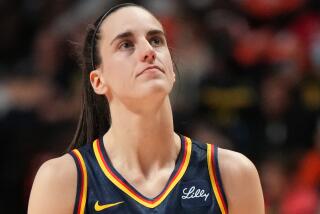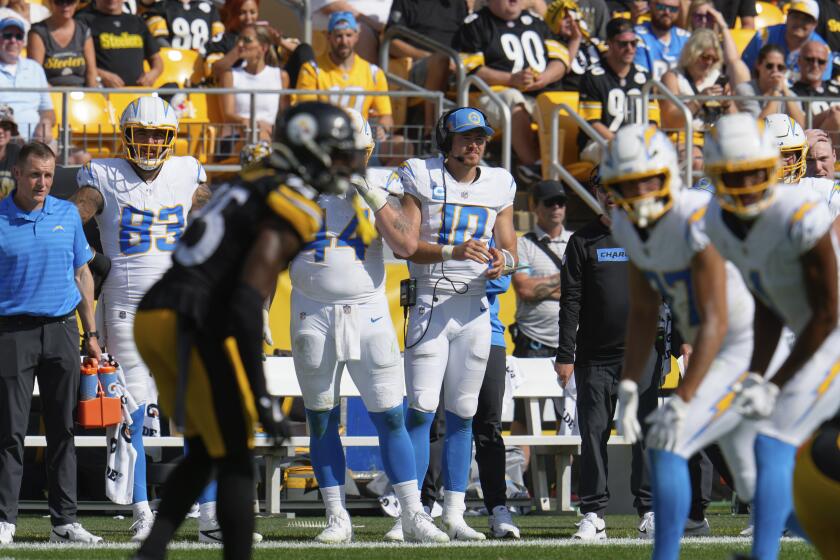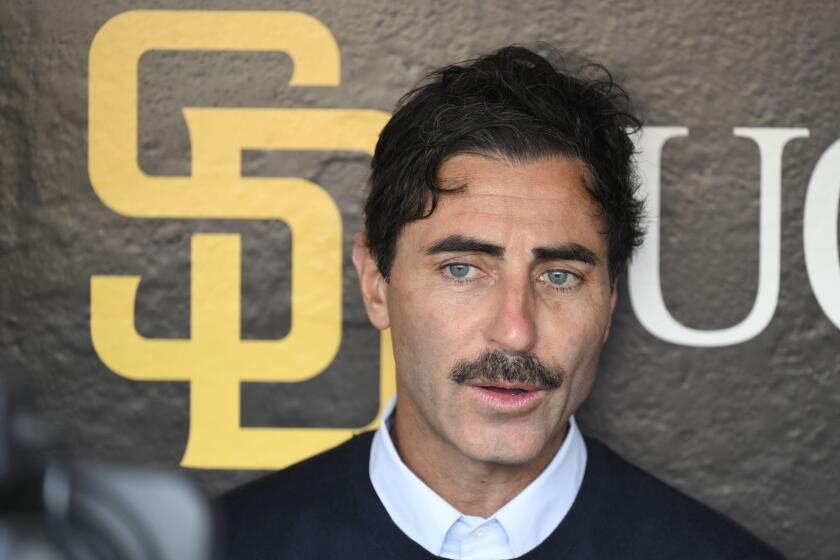NFL deal on head injuries rejected
A federal judge denied preliminary approval of a proposed $765-million concussion settlement Tuesday between the NFL and more than 4,500 retired players because of concerns the money will be insufficient over the life of the deal.
The settlement, which would be paid over a 20-year period, is intended to cover the related medical expenses of those who may suffer lasting neurological damage because of their playing careers. The settlement would cover a group that could top 20,000 players, whether they had sued the league or not, and is designed to last for 65 years.
U.S. District Judge Anita B. Brody rejected the proposed settlement because the sides failed to provide evidence that the amount -- $675 million of which would be monetary awards -- is enough to help not just former players already diagnosed with injuries, but also those players who may develop conditions in years to come.
“In light of my duty to protect the rights of all potential class members and the insufficiency of the current record, I will deny the motion without prejudice,” Brody wrote in her 14-page opinion, filed in U.S. District Court in Pennsylvania. Because the denial was “without prejudice,” the motion to approve can be resubmitted.
Although the attorneys for the plaintiffs said economists, actuaries and medical experts they hired approve of the settlement, Brody said she did not receive any proof of that in the motion.
“In the absence of additional supporting evidence,” she wrote, “I have concerns about the fairness, reasonableness and adequacy of the settlement.”
For some retired players critical of the settlement, the ruling was welcome news.
“I think the judge can see through the smoke,” said Elvin Bethea, 57, a Hall of Fame defensive end with the Houston Oilers, who says that since retiring he has had 13 surgeries related to football and suffers from mild memory loss. “We’ve been fighting this for such a long time.... This was not a fair, equitable deal.”
The high-profile lawsuit began with individual cases filed by retired players against the league and several helmet makers starting in 2011. The first plaintiff in a federal concussion suit was Ray Easterling, a former safety for the Atlanta Falcons who subsequently killed himself. An autopsy determined he had been suffering from chronic traumatic encephalopathy, which has been linked to multiple blows to the head.
Eventually about 4,500 players or their family members filed suit and they were consolidated in federal court in Pennsylvania two years ago.
Attorneys for the players, originally seeking billions of dollars in damages, asked the court to certify the case as a class action. Last July, Brody sent the two sides to mediation and just one week before the kickoff of the current season, the retired players and the NFL reached a deal.
“We are confident that the settlement will be approved after the court conducts its due diligence on the fairness and adequacy of the proposed agreement,” Christopher Seeger and Sol Weiss, co-lead counsels for the retired NFL player plaintiffs, said in a written statement.
Details of the proposal became public last week. The deal calls for payouts of as much as $5 million for players suffering from amyotrophic lateral sclerosis, or Lou Gehrig’s disease; as much as $4 million to the families of brain-damaged athletes who committed suicide; up to $3 million for cases of dementia; and various lesser amounts for lesser ailments. Players with milder forms of dementia may receive treatment but not payouts.
The proposed deal calls for the league to spend $675 million for compensatory claims during a 20-year period for players with neurological symptoms, $75 million for medical testing and diagnosis of retired players and $10 million for research and education related to concussions and brain injuries. The league would pay $112 million more to the players’ lawyers for fees and expenses, bringing the total to close to $900 million. But the deal had to be approved by the federal judge, who must determine whether it was fair and adequate.
“I’ve always regarded the amount of money involved, given the number of potential claimants, as extremely small given the revenues of the NFL,” said William B. Gould, a Stanford law professor and former chairman of the National Labor Relations Board. “I would have expected this settlement to be in the billions of dollars.”
Brody’s ruling Tuesday cast serious doubts on the agreement’s equity.
“I am primarily concerned that not all retired NFL football players who” are diagnosed with brain damage “will be paid,” the judge wrote.
Although the arbiter in the mediation indicated he was presented with studies showing the settlement money would be sufficient, the judge added, “unfortunately, no such analyses were presented to me.” Her order asks the two sides to present the evidence for the settlement to receive further consideration.
Gould, who said the judge would not devise her own settlement number in the absence of a full-fledged trial, said he was “puzzled” about why the players’ attorneys did not include those analyses in their motion.
“They left [Brody] completely at sea,” he said. “She had nothing to go on. She had to make the decision she did. They’re requiring her to go on their word, as far as I can see.”
Brody’s questions echo those brought forward by numerous critics of the proposed settlement since it was announced Aug. 29. Although attorneys for the players have defended the agreement, others have worried that the money wouldn’t be enough to cover all the former players who could one day be diagnosed with brain impairment. And since players who participate in the settlement waive their right to sue the NFL for any other brain issue, many feared players diagnosed in the future could end up with no money and no right to seek remedy.
--
kenneth.bensinger@latimes.com
More to Read
Go beyond the scoreboard
Get the latest on L.A.'s teams in the daily Sports Report newsletter.
You may occasionally receive promotional content from the Los Angeles Times.










